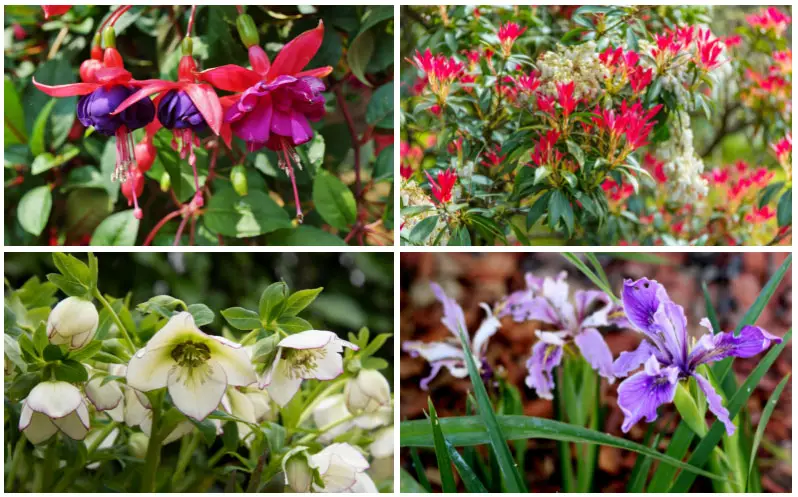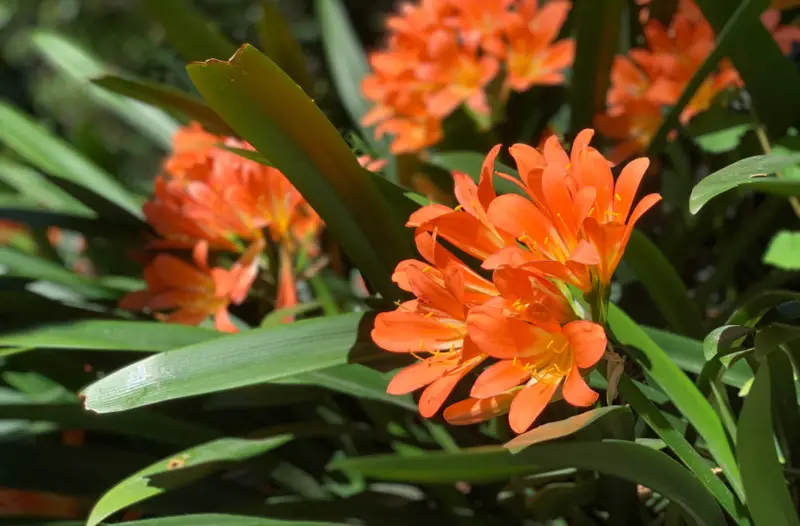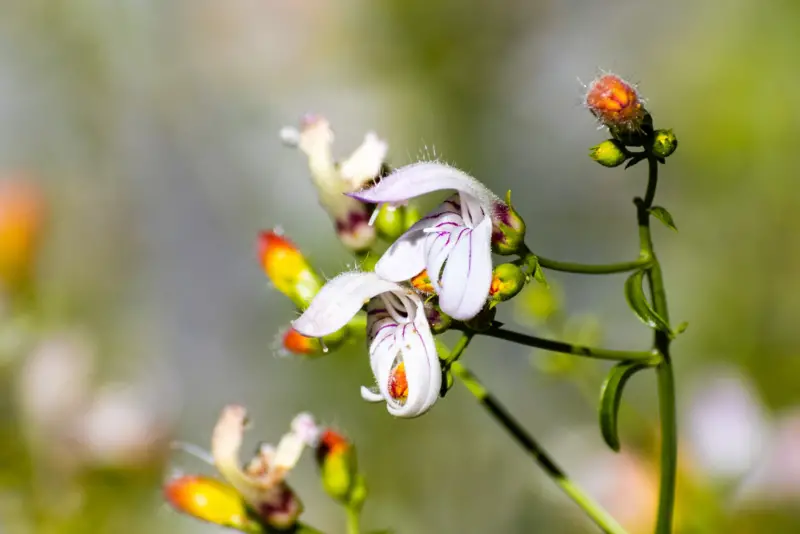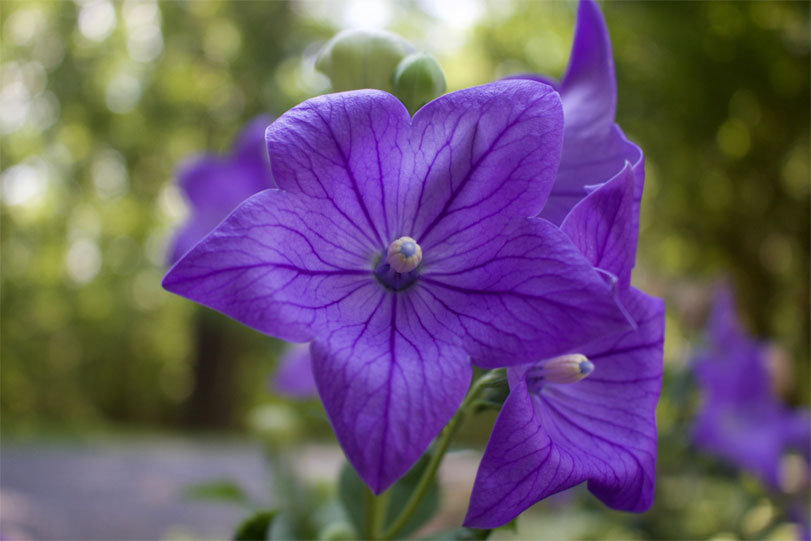
Depending on where you live in California, you will be in different growing zones. You may also face unique challenges, such as salt in the air off the ocean.
While many California flowers thrive in the sun, finding shade-loving flowers can be a more dilemma. Consider these choices for flowers that do well in the shade.
Fuchsia

Fuchsia may be the perfect plant for your shady spot. These plants love humidity, so be sure that they do not dry out. You can find fuchsia plants that bloom in different colors, including red, pink, white, and violet. Fuchsia seldom grows to be over 24-inches tall. Most options bloom mid-spring, but you will want to check about the particular variety you are considering.
Ribes viburnifolium
The ribes viburnifolium is a native of the Channel Islands. This plant may be a great choice if you are looking for a ground cover for a shady spot. It seldom grows over 2-feet tall, and its red stems can spread to be over 6-feet wide. This evergreen plant puts on flowers in the spring, which are followed by red berries.
Clivia miniata

Clivia Minata is a clump-forming plant that produces yellow, orange, and red flowers in funnel-shaped clusters after the plant is three years old. After the flowers fade, tiny red berries will appear. You are likely to love the upright glossy green leaves on this upright plant. It grows to be two-feet-tall, and it thrives in zones 9 to 11.
Woodwardia fimbriata

Woodwardia Fimbriata, commonly called giant chain fern, is the largest fern in North America. This plant loves consistently moist, well-drained soil. Sterile lance-shaped fonds grow in early spring, followed by fertile ones in the early summer. This non-flowering fern often grows up to 8-feet tall when it has enough moisture.
Helleborus

Growing in zones 6 to 8, the Helleborus is an evergreen plant that can grow up to 24-inches tall. It produces leafy stems without any basil leaves. The coarse foliage is evergreen. This plant also produces pale green, nodding flowers in the late winter and early spring that can be up to 2-inches across. These flowers have a unique bowl shape.
Pieris japonica

The pieris japonica shrub grows between 9-and-12-feet tall in zones 5 to 8. This upright evergreen plant often grows as wide as it is tall. It produces lily-of-the-valley-like clusters of tiny white flowers in the early spring. New foliage on this plant is an orange color but matures to a dark glossy green. This plant puts on bead-like flower blossoms during the winter, making it a favorite of many landscapers.
Red Stem Dogwood

Red stem dogwood grows up to nine-feet tall in zones 3 to 8. It easily spreads to be as wide as it is tall. This perennial benefits from being cut back about 25% in the early spring as it stimulates new growth. This option is an ideal plant for wet environments. While it prefers the shade, it will tolerate the full sun if needed. It puts on tiny white clusters of flowers in the early spring followed by white drupes in the summer months that birds love.
Douglas Iris

Douglas iris is a Santa Barbara-area native plant that grows in zones 7 to 9. Growing up to 24-inches tall, this plant prefers heavy soils that drain well. Most varieties of this spring-blooming plant produce blue flowers, but you can find white, cream and yellow options. This clump-forming plant also has sword-shaped upright leaves that remain bright green throughout the year. This option needs some sun each day, so plant it in a partially shaded area.
Yawning Penstemon

The yawning penstemon likes to prop itself up, making it a great option in zones 6 to 10 to plant near a large rock or at the base of a tree. This spring-blooming plant grows to be about 18-inches tall. The flowers appear in three-to-five flower whorls, with each having four parts. The upper parts of these off-white flowers are usually paler than the bottom ones. This plant also produces delicate, lance-shaped leaves that appear as opposites.
Orange Honeysuckle

The orange honeysuckle will run freely across the ground or climb up almost any surface to at least 15 feet. It is not unusual for this honeysuckle to grow to be 35-feet tall if it has something to climb. The vivid orange, trumpet-like flowers appear in clusters in the late spring and early summer. These flowers look even more striking because a completely round leaf grows right under the flower clusters. This plant that grows equally well in the sun or shade loves to be consistently moist.













